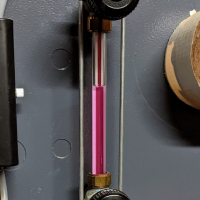Welcome! Here are the website rules, as well as some tips for using this forum.
Need to contact us? Visit https://heatinghelp.com/contact-us/.
Click here to Find a Contractor in your area.
To Increase Water Main Size from 3/4" to 1" must tap into city line also be 1"?
Options
My plumber discouraged me from increasing main size from 3/4 to 1", saying there would have to be adapters at each end. But if the tap at the city line was changed to 1"--more expensive I'm sure--then adaptor would only be on the house side. I feel for re-sale value of house someday--when someone might want to expand it--1" is a good size, even 1.5 wouldn't be ridiculous. Even for us, where the piping to all sinks, etc. is only 1/2", it would mean one could shower with the dishwasher, washing machine or another faucet on and not feel pressure drop. I gather the tap size at the city main must be at least as big as the main going into the house.
0
Comments
-
How long is the run? What is the city water pressure? What are your water requirements? Are we talking pex or copper.
There is nothing wrong with running the main pipe at 1" and having both ends 3/4", this might make sense if the city pressure is low. Also, 1" pex is only slightly bigger that 3/4" copper."If you can't explain it simply, you don't understand it well enough"
Albert Einstein1 -
Plumber estimates city pressure is 100psi. Run is about 25ft to curb box then a few more feet to city main. I set house pressure at 60 which works well even with our old 1924 galvanized main. 1.5 bathrooms, washer, dishwasher, kitchen and slop sinks. Not a big big pressure drop in shower if someone else uses faucet but a little more headroom wouldnt hurt. And not bad for next buyer's house expansion. Tapping into city line would be more excavation and $$ for sure but maybe as you say we could keep it 3/4 at both ends and 1" for the run. Type K copper coil using boring method.0
-
If you have 100 psi you have a problem I don’t think you want anything over 600
-
-
He literally said this...Snowmelt said:If you have 100 psi you have a problem I don’t think you want anything over 60
"Plumber estimates city pressure is 100psi. Run is about 25ft to curb box then a few more feet to city main. I set house pressure at 60 which works well " Single pipe quasi-vapor system. Typical operating pressure 0.14 - 0.43 oz. EcoSteam ES-20 Advanced Control for Residential Steam boilers. Rectorseal Steamaster water treatment1
Single pipe quasi-vapor system. Typical operating pressure 0.14 - 0.43 oz. EcoSteam ES-20 Advanced Control for Residential Steam boilers. Rectorseal Steamaster water treatment1 -
The small restriction of the 3/4 inch tap at the city main will have only a very minor effect on your house pressure. A new 1 inch line to the tap might be in order -- but only if you are experiencing pressure drop issues which can't be controlled with your pressure regulator at the house.
If you have 100 psi or so at the,street and you want to hold 60 psi at the house, you have ample pressure drop available in your present service line to supply all the water you might want. If you are experiencing pressure drop issues in the house (such as the shower gets weak when you flush the WC) the problem is either your house plumbing -- very likely undersized -- or your pressure regulator.
Changing the tap size on the city water main is not all that simple, and is certainly not something which you or your plumber can do on your own. Particularly when it won't solve your apparent problem...Br. Jamie, osb
Building superintendent/caretaker, 7200 sq. ft. historic house museum with dependencies in New England1 -
@Jamie Hall Thanks and if I lowered house pressure to 50psi, probably have even less pressure drop issues. It might be nice to put in a pressure gauge before the PRV to know street pressure, but our plumber prefers less bells and whistles. Inside pressure I just measure with a gauge at the basement slop sink.
Thanks for all the answers folks, decision made.0 -
@D107
You have plenty of water pressure. That's a good thing. But you also say you have a almost 100 year old water main that is galvanized pipe.
Over time the pipe can corrode and build up rust on the inside diameter. This is called "tuberculation". If the build up is significant it will show good water pressure but the gallons per. minute can drop off a lot.
Go to a faucet and fill a one gallon milk jug with cold water and time how long it takes to fill. This will give you a good idea of what the GPM is. If you have around 5 gallons a minute you're probably in good shape and there isn't a need to change the main. At least from a performance standpoint.
0 -
put a gauge in the house and observe pressure drop as you open more and more taps It’s the dynamic pressure you want to measure A large drop, over 20 psi could be a regulator issue, or restricted line somewhere
As an aside, Caleffi PRVs have very low “fall off pressure” if ever you need to upgrade👌Bob "hot rod" Rohr
trainer for Caleffi NA
Living the hydronic dream1 -
Agreed. Good idea to change it on your time and not when the unexpected occurs.0
Categories
- All Categories
- 85.2K THE MAIN WALL
- 3.1K A-C, Heat Pumps & Refrigeration
- 55 Biomass
- 424 Carbon Monoxide Awareness
- 73 Chimneys & Flues
- 1.9K Domestic Hot Water
- 5.2K Gas Heating
- 129 Geothermal
- 160 Indoor-Air Quality
- 3.3K Oil Heating
- 61 Pipe Deterioration
- 884 Plumbing
- 5.9K Radiant Heating
- 376 Solar
- 14.7K Strictly Steam
- 3.2K Thermostats and Controls
- 59 Water Quality
- 49 Industry Classes
- 89 Job Opportunities
- 28 Recall Announcements






